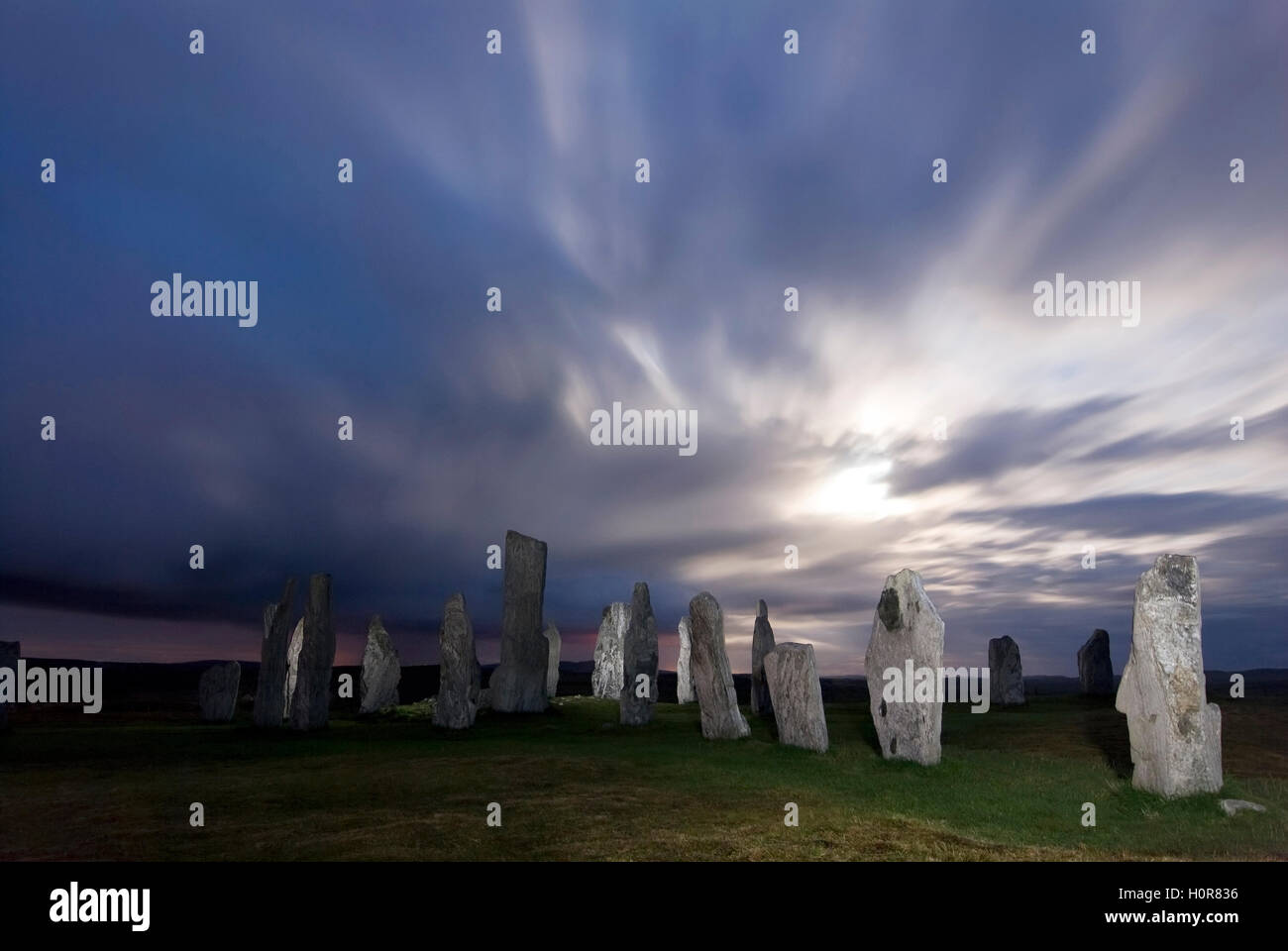Callanish Stone Circle at night during full moon Isle of Lewis Outer Hebrides Western Isles Scotland UK GB Europe Standing stone

Image details
Contributor:
Doug Blane / Alamy Stock PhotoImage ID:
H0R836File size:
28.7 MB (676.5 KB Compressed download)Releases:
Model - no | Property - noDo I need a release?Dimensions:
3872 x 2592 px | 32.8 x 21.9 cm | 12.9 x 8.6 inches | 300dpiDate taken:
2009Location:
Callanish Stone Circle, Isle of Lewis, Outer Hebrides, Western Isles, Scotland, UK, GBMore information:
PICTURE CREDIT DOUG BLANE Callanish Stone Circle at night during full moon Isle of Lewis Outer Hebrides Western Isles Scotland UK GB Europe Standing stones monolith monoliths ancient historic scottish history Callanish Hebrides landscape sacred Scotland Scottish standing stone uk Ancient standing stones of Callanish 1 built about 2900 BC on the Isle of Lewsi in the Outer Hebrides of Scotland burial cist ancestor ancestry ancestral tomb grave gneiss architecture monument sunlight sculpture structure building history historic heritage primeval primordial time timeless ageless enduring long lasting mankind transcendent uplifting atmospheric Over 5000 years old horizontal europe european europa great britain scotland western isles outer hebrides lewis island isle of standing stones callanish stone rock calendar mood atmospheric heritage historic prehistoric ancient circle megalith tursachan calanais The Callanish (or Calanais) Stones of Lewis are some of the most famous standing stones in Scotland They date back to 2000-1500 BC There are about 50 stones altogether with 13 stones of 8-13 feet in height surrounding the central monolith which is 16 feet high and weighs approximately 55 tons The stones gradually fell out of use and were being slowly enveloped by encroaching peat by about 800 AD when a nearby settlement was built By the time the stones were excavated in 1857 the peat was nearly six feet deep